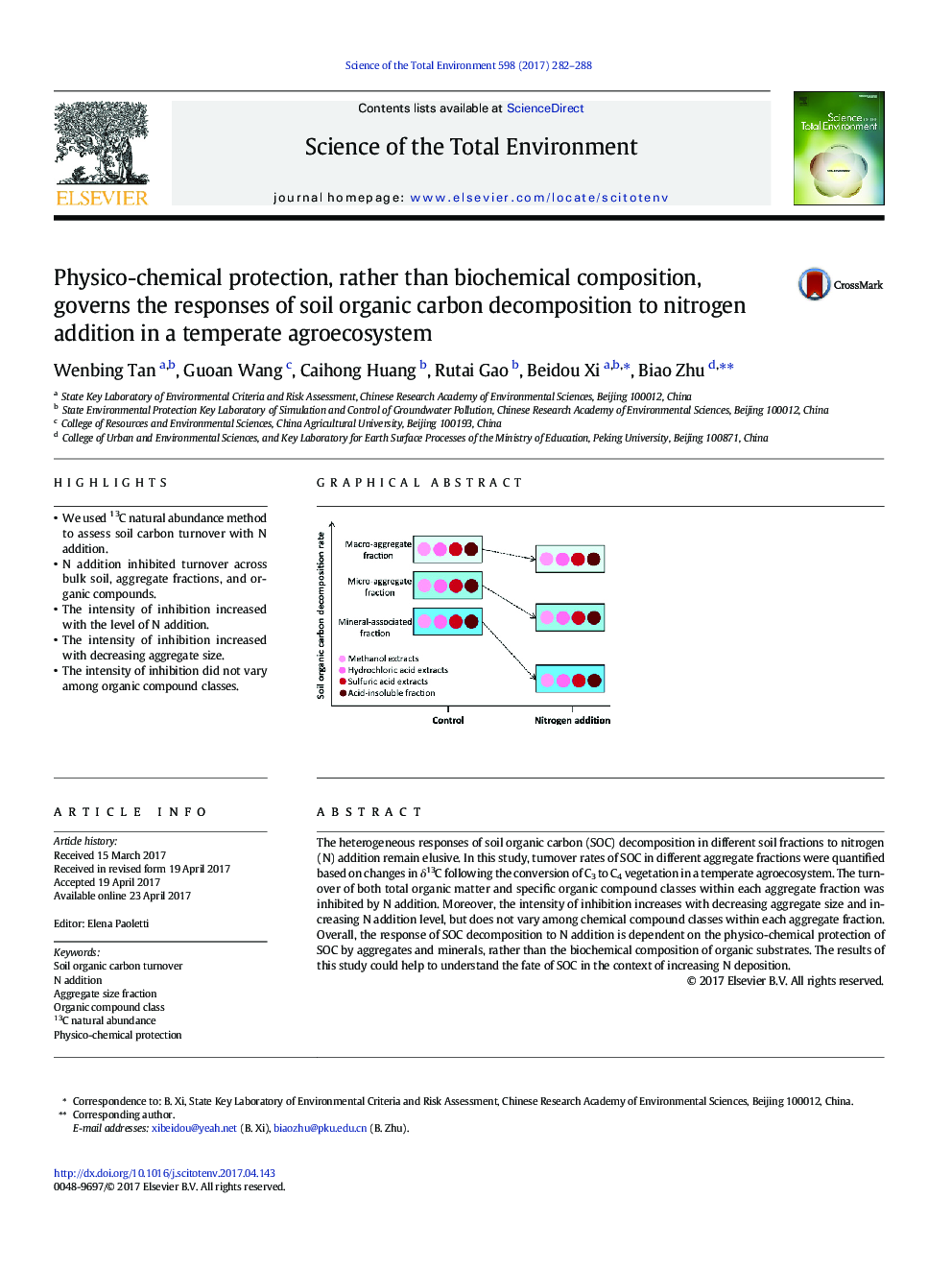| Article ID | Journal | Published Year | Pages | File Type |
|---|---|---|---|---|
| 5750943 | Science of The Total Environment | 2017 | 7 Pages |
â¢We used 13C natural abundance method to assess soil carbon turnover with N addition.â¢N addition inhibited turnover across bulk soil, aggregate fractions, and organic compounds.â¢The intensity of inhibition increased with the level of N addition.â¢The intensity of inhibition increased with decreasing aggregate size.â¢The intensity of inhibition did not vary among organic compound classes.
The heterogeneous responses of soil organic carbon (SOC) decomposition in different soil fractions to nitrogen (N) addition remain elusive. In this study, turnover rates of SOC in different aggregate fractions were quantified based on changes in δ13C following the conversion of C3 to C4 vegetation in a temperate agroecosystem. The turnover of both total organic matter and specific organic compound classes within each aggregate fraction was inhibited by N addition. Moreover, the intensity of inhibition increases with decreasing aggregate size and increasing N addition level, but does not vary among chemical compound classes within each aggregate fraction. Overall, the response of SOC decomposition to N addition is dependent on the physico-chemical protection of SOC by aggregates and minerals, rather than the biochemical composition of organic substrates. The results of this study could help to understand the fate of SOC in the context of increasing N deposition.
Graphical abstractDownload high-res image (157KB)Download full-size image
